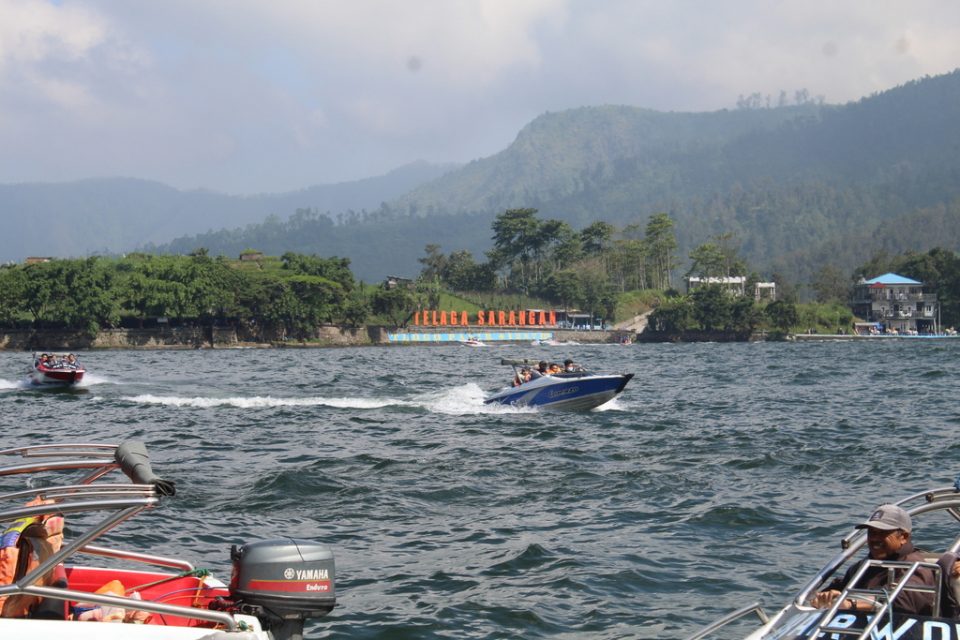Should President Joko Widodo model any of his “Ten New Balis” tourist attractions on the mountain resort of Sarangan in East Java, then he won’t be drawing too many discerning European visitors.
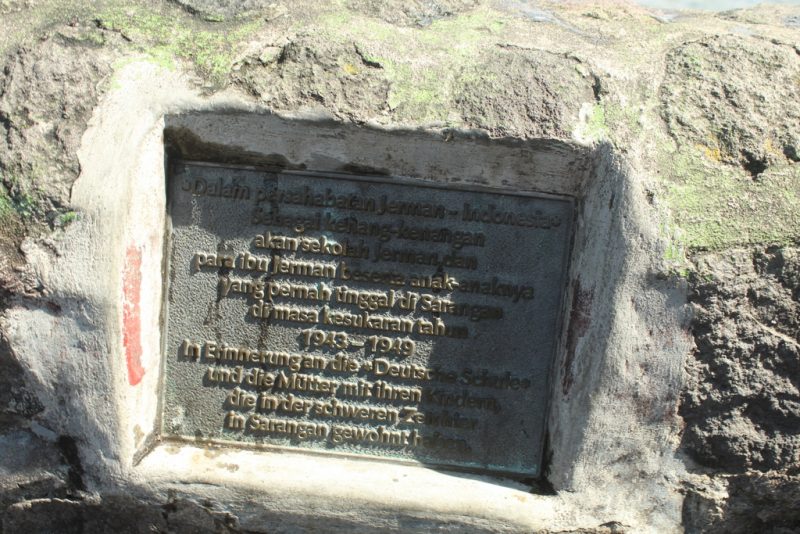

The lakeside village is a lovely location with splendid surroundings and curious history, sadly spoilt by densely packed crowds, raucous noise, trashy souvenirs, and parking rip-offs. The local government tries to keep the place clean and deter touts by advertising fixed prices, but visitor numbers overwhelm.
It wasn’t always a mess; the 30-hectare volcanic crater Telega Pasir (Sand Lake), and its rich carpets of multi-color vegetable plots tumbling down from the hillside settlement was once a place of serenity and safety for a chosen few – Germans trapped far from their homeland.
When the Second World War erupted in September 1939, the Western nations confronting the Third Reich included the Netherlands, and by extension the kingdom’s East Indies colony. At the time there were several hundred German professionals, business people, retirees, and their families scattered around the archipelago, though mainly in Java.
The Dutch authorities shipped them back to Europe as prisoners or herded them into camps as enemy aliens, with many suffering hardships. Then came the 1942 invasion of Indonesia by Japan, an ally of Germany. The Dutch were trounced, the barbed-wire gates dragged open and the camps empty.
Though not for long. Now the jailers were then jailed, Dutch nationals and other citizens of European states at war with the Nazis and its Axis partners.
It wasn’t wise for liberated Germans to wander Indonesia where they might be mistaken for former colonialists and killed by the Japanese before their documents could be authenticated, so a safe place had to be chosen.
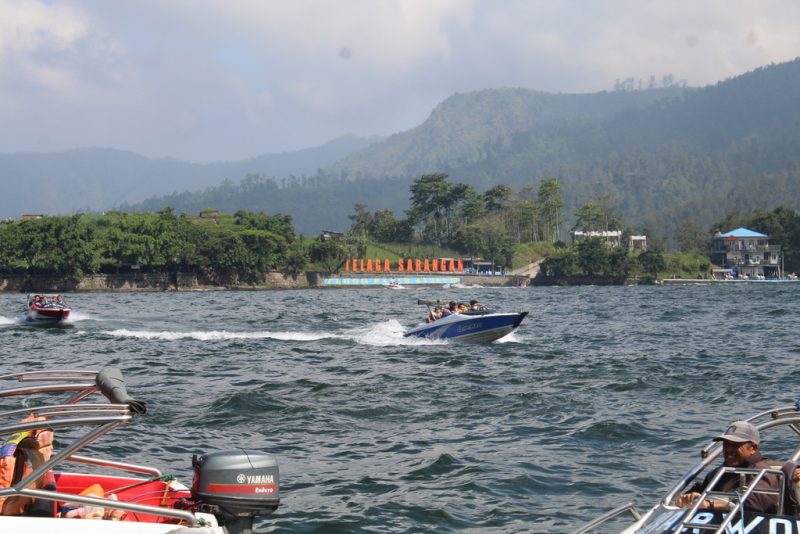

That was Sarangan, formerly a small resort for Dutch officials on the eastern side of Mount Lawu. The volcano (3,265 meters) straddles the border with Central Java and is supposedly dormant. The last known rumblings were in 1885 along with a dusting of ash.
At 1,400 meters, Sarangan’s cool climate and rich volcanic soils made it ideal for a self-sufficient community. Who better than the disciplined Germans well imbued with the work ethic, and who thought they were marking time prior to becoming masters of the universe?
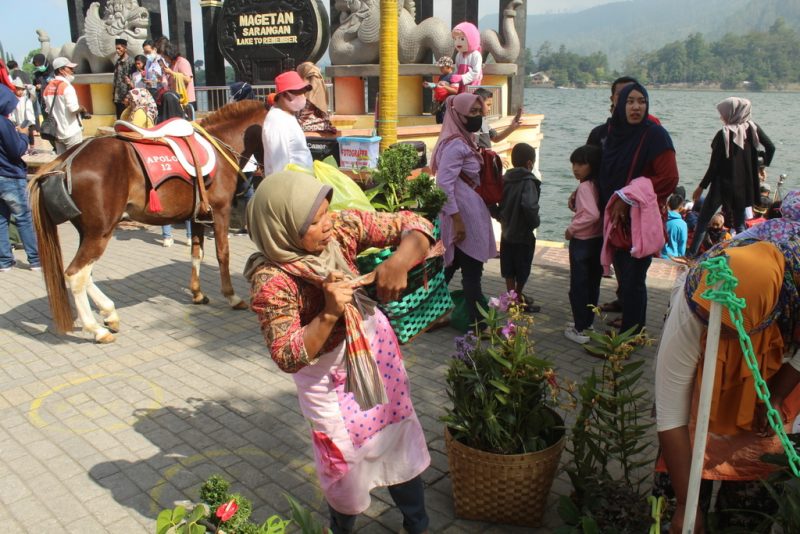

They lived on vegetables grown in the valleys, meat, and milk from dairy farms. There was enough produce to export. The never-idle foreigners opened a kindergarten and the Sarangan German School on 20 April 1943 (Hitler’s 54th birthday) before Japanese and German VIPs.
At one stage there were 350 students, according to German historian Horst H Geerken, a former telecommunications engineer in Indonesia. His book Hitler’s Asian Adventure has been used to research this story:
‘‘The pupils marched around the lake to lively tunes: the German youth movements of the Jungvolk, and the Hitler Youth had arrived in the East Indies. The Japanese set up the Badan Pemuda Asia Raya, the Great Asia Youth Corps, a fanatical, tightly organized troop … (which) later played an important role in the fight for independence.
“Far from the terrible war in Europe, the Germans lived as if they were at peace in a self-governing German island in exotic surroundings. There was no orderly schooling back home in Germany because of the daily Allied air raids, and city children were being evacuated to the countryside.”
Sarangan also became a rest-and-relax center for German officers from warships and submarines which docked in Surabaya to replenish supplies. The Japanese invaders, and later Indonesian nationalists, were keen to use German expertise to launch an indigenous navy.
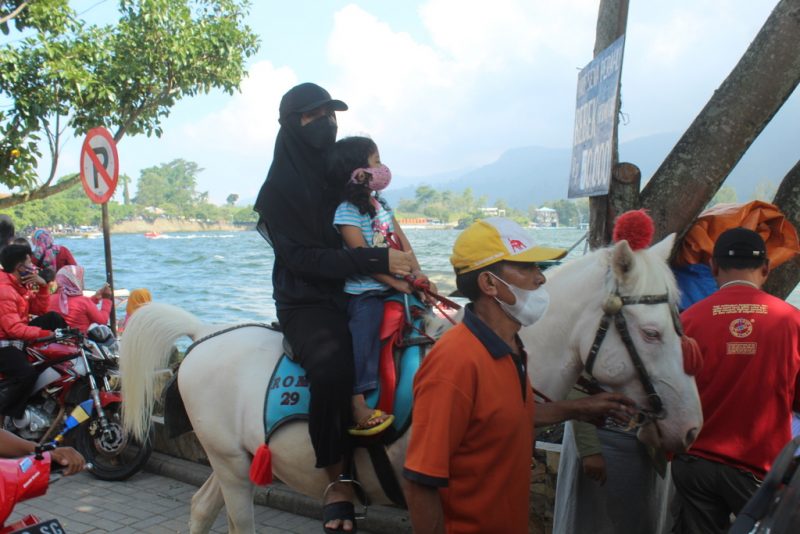

SORA (Sekolah Olahraga), a training center for sport and languages with military overtones was started in Sarangan for Indonesian cadets. It was led by German officers who were also instructors in Soekarno’s volunteer army, PETA, (Pembela Tanah Air – Defenders of the Homeland) established in 1943 by the Japanese.
When the war ended in 1945 and Indonesia’s independence was proclaimed, the Sarangan school stayed open.
Geerken records “the relationship between Soekarno and the Indonesian military and the Germans was one of great mutual respect and affection. As opponents of the Dutch and as only half friends of the defeated Japanese, they saw Germany as their ally of the future.
“German experts in a wide range of areas – engineers, craftsmen, and doctors – who had previously worked for the Dutch colonial government were now needed by the young and inexperienced Indonesian Republic.”
In 1946, the first year of the Dutch return to Indonesia, it seemed Sarangan and its shrinking German population (42 women and children, and ten men) had been overlooked. Then the Dutch opened their second “police action” and in late 1948, Indonesian partisans torched the town to stop the returning colonialists from seizing assets.
The Germans were taken prisoners by the Dutch again and eventually repatriated by the Red Cross. Now all that remains is an undated and unattributed small plaque in the wall surrounding the lake, largely unnoticed as the crowds goggle speedboats roaring across the once tranquil waters. It reads in Indonesian and German:
“In memory of the friendship between Germany and Indonesia, and the German school and the German mothers and children who lived in Sarangan and endured the difficult times between 1943 and 1949.”
Geerken was in Sarangan in 1963, 15 years after his compatriots had left. “It was once more a dreamy, picturesque little village, though the ruins left by the scorched earth policy were still there, as were the foundations of the school,” he said.
No longer. What Pancasila University tourism lecturer Fahrurozy Darmawan calls “overtourism” has swamped the site, “one of the main problems in tourism management is that there is no symbiosis between tourism and the community. Tourism, which is expected to be a catalyst for development, has turned into a conflict between tourists, local communities, and investors.”
But the Sarangan scenery is a knockout and the weather is usually mild and air clean. Local produce, like honey melons and strawberries, is field-fresh. The lake is three hours from Surabaya by road and with plenty of hotels and guest houses. Just don’t go on a public holiday.




